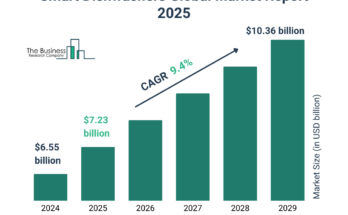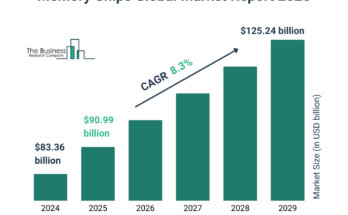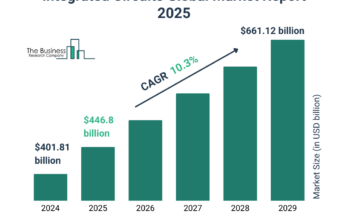Global Low-Carbon Hydrogen Market Overview
The Global Low-Carbon Hydrogen Market was valued at USD 22.73 billion in 2023 and is projected to reach USD 68.22 billion by 2030, growing at a CAGR of 17%. Low-carbon hydrogen refers to hydrogen produced with minimal greenhouse gas emissions, significantly reducing its carbon footprint compared to traditional methods. This cleaner hydrogen is pivotal in achieving sustainable energy solutions across various industries, including power generation, transportation, and heavy industry sectors such as steel and chemicals. As the demand for cleaner energy alternatives rises, low-carbon hydrogen is increasingly seen as a key player in decarbonizing these sectors.
Market Drivers
- Environmental Benefits: Low-carbon hydrogen is considered an eco-friendly alternative to traditional hydrogen production methods, such as grey hydrogen, which relies on fossil fuels. Green hydrogen (produced via electrolysis powered by renewable energy) and blue hydrogen (created using natural gas with carbon capture and storage) are crucial in reducing emissions and mitigating climate change.
- Government Support: Several global governments are actively promoting low-carbon hydrogen through investment in infrastructure and technology. Initiatives like the National Green Hydrogen Mission in India and the Hydrogen Strategy in Europe aim to make low-carbon hydrogen a cornerstone of national energy policies. These initiatives are boosting market growth by offering financial support, subsidies, and the creation of specialized hubs.
- Increased Industrial Applications: Low-carbon hydrogen’s versatility has led to its adoption in industries ranging from transportation (hydrogen fuel-cell vehicles) to industrial processes (such as steel production and ammonia synthesis). The expanding application base is fueling market demand.
- Technological Advancements: Innovations in electrolysis and carbon capture technologies are driving down the cost of production and improving the efficiency of low-carbon hydrogen generation. These advancements make low-carbon hydrogen more competitive with traditional fuels, supporting its broader adoption.
For more insights and updates, access the full report or request a free sample:https://www.stellarmr.com/report/req_sample/Low-Carbon-Hydrogen-Market/2223
Market Trends
- Shift Towards Green Hydrogen: The market is witnessing a significant shift from grey hydrogen (produced from fossil fuels) to green and blue hydrogen. This trend is being driven by the decreasing cost of renewable energy sources and innovations in carbon capture utilization and storage (CCUS) technologies.
- Hydrogen as a Transport Fuel: Hydrogen-powered vehicles, particularly fuel cell vehicles, are becoming increasingly popular due to their higher efficiency and lower environmental impact compared to conventional combustion engines. This trend is contributing to the growing demand for low-carbon hydrogen, especially in sectors such as heavy-duty transport, aviation, and shipping.
- Decentralized Hydrogen Production: With the advancement of electrolysis technology, decentralized hydrogen production facilities are emerging. These plants can be powered by renewable energy sources such as wind, solar, and hydropower, enabling localized production and reducing transportation costs.
Market Segmentation
- By Production Technology
- Electrolysis: The most environmentally friendly method, involving water splitting using electricity from renewable sources.
- Steam Methane Reforming with Carbon Capture and Storage (SMR with CCS): This method reduces emissions by capturing and storing CO2 produced during the hydrogen extraction process.
- Biomass Gasification: Converting organic materials into hydrogen, this method is gaining attention for its sustainability.
- By Distribution Mode
- Pipeline Transportation: The most cost-effective method for large-scale distribution of gaseous hydrogen.
- Bulk Liquid Hydrogen Transportation: Suitable for transporting hydrogen over long distances in liquid form.
- Compressed Hydrogen Transportation: Used for smaller quantities of hydrogen, typically transported in cylinders or tanks.
- By End-Use Industry
- Transportation: Including hydrogen-powered vehicles and transport infrastructure.
- Power Generation: Hydrogen as a clean fuel for generating electricity, often in conjunction with renewable energy sources.
- Industrial Processes: Using hydrogen in processes like steel manufacturing, refining, and ammonia production.
- Residential and Commercial Heating: Hydrogen’s potential as an alternative to natural gas for heating purposes.
For more insights and updates, access the full report or request a free sample:https://www.stellarmr.com/report/req_sample/Low-Carbon-Hydrogen-Market/2223
Key Players in the Low-Carbon Hydrogen Market
- Air Liquide
- Linde plc
- Air Products and Chemicals, Inc.
- Siemens Energy
- ITM Power
- Plug Power Inc.
- Ballard Power Systems
- Nel ASA
- McPhy Energy
- ENGIE
- Mitsubishi Power
- Cummins Inc.
- Enapter
- FuelCell Energy
- Hexagon Composites
- Worley Limited
- Snam S.p.A.
- Bloom Energy
Regional Insights
- Europe: Europe is a leader in the low-carbon hydrogen market, with a robust hydrogen policy framework and several large-scale green hydrogen projects. The region aims to be the world leader in hydrogen production by 2030.
- North America: The U.S. and Canada are making significant strides in hydrogen production, particularly blue hydrogen. The Appalachian Hydrogen Hub and other regional initiatives are poised to boost hydrogen production and create jobs.
- Asia-Pacific: China, India, and Japan are major players in the hydrogen sector. China, in particular, is the largest producer and consumer of hydrogen and is actively investing in low-carbon hydrogen production.
- Middle East and Africa: The Middle East is looking to diversify its energy portfolio by investing in clean hydrogen. Countries in this region are focusing on blue hydrogen production using natural gas resources.
Key Questions Answered
- What is the expected growth rate of the Low-Carbon Hydrogen Market?
- The market is expected to grow at a CAGR of 17% from 2024 to 2030.
- Which production technology holds the largest market share?
- Electrolysis holds the largest market share, driven by its sustainable and clean production process.
- What are the major challenges hindering market growth?
- High production costs, lack of infrastructure, and the need for reliable technologies are major challenges.
- Which region is leading in the Low-Carbon Hydrogen Market?
- Europe is the dominant market, followed by North America and Asia-Pacific.
Conclusion
The Low-Carbon Hydrogen Market is on a strong growth trajectory, driven by technological advancements, increased industrial demand, and supportive government policies. As industries transition towards cleaner alternatives, low-carbon hydrogen will play a pivotal role in decarbonizing critical sectors. The market presents significant opportunities for innovation, particularly in electrolysis and carbon capture technologies, as well as in infrastructure development to support hydrogen distribution. With increasing investments and rising demand across sectors like transportation and power generation, the low-carbon hydrogen market is poised for long-term growth.
For further insights and detailed analysis, please refer to the complete market report:https://www.stellarmr.com/report/Low-Carbon-Hydrogen-Market/2223
Key Offerings:
- Past Market Size and Competitive Landscape (2018 to 2022)
- Past Pricing and price curve by region (2018 to 2022)
- Market Size, Share, Size & Forecast by Different Segment | 2024-2030
- Market Dynamics – Growth Drivers, Restraints, Opportunities, and Key Trends by Region
- Market Segmentation – A detailed analysis by segment with their sub-segments and Region
- Competitive Landscape – Profiles of selected key players by region from a strategic perspective
- Competitive landscape – Market Leaders, Market Followers, Regional player
- Competitive benchmarking of key players by region
- PESTLE Analysis
- PORTER’s analysis
- Value chain and supply chain analysis
- Legal Aspects of Business by Region
- Lucrative business opportunities with SWOT analysis
- Recommendations
For More Information:
Digital power utility Market https://www.stellarmr.com/report/Digital-power-utility-Market/1148
Dolomite Powder Market https://www.stellarmr.com/report/Dolomite-Powder-Market/1150
Duty-Free Retail Market https://www.stellarmr.com/report/Duty-Free-Retail-Market/1151
Electric Vehicle Charger Market https://www.stellarmr.com/report/Electric-Vehicle-Charger-Market/1152
Electrical Conduit Market https://www.stellarmr.com/report/Electrical-Conduit-Market/1153
About Stellar Market Research:
Stellar Market Research is a multifaceted market research and consulting company with professionals from several industries. Some of the industries we cover include medical devices, pharmaceutical manufacturers, science and engineering, electronic components, industrial equipment, technology and communication, cars and automobiles, chemical products and substances, general merchandise, beverages, personal care, and automated systems. To mention a few, we provide market-verified industry estimations, technical trend analysis, crucial market research, strategic advice, competition analysis, production and demand analysis, and client impact studies.
Contact Stellar Market Research:
S.no.8, h.no. 4-8 Pl.7/4, Kothrud,
Pinnac Memories Fl. No. 3, Kothrud, Pune,
Pune, Maharashtra, 411029




